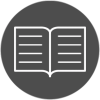This week’s great question came from Steven.
‘Hi are you able to advice me on a course book that would give me all the correct information to produce a high standard joinery drawing that would then be sent off for approval’
Do you want the quick answer?
I’m afraid that the quick answer is ‘No’ – I’m not aware of any such book. Maybe if such a book existed, I wouldn’t write the CAD Setter Out blog!
My book recommendations
If you want to produce great technical drawings, there are three areas of expertise you must master.
First you must master your subject, then learn to communicate your knowledge through drawings, and finally you will need to learn how to use CAD software to create those drawings.
Master your subject
I my opinion, there haven’t been any really comprehensive books written on woodworking in years. Of the many woodworking books I have owned and read, there are three that I return to frequently:
The Practical Carpenter and Joiner Illustrated
A quick Guide to every branch of the trade by 15 specialist Authors
 My copy was published in 1961, so many of the techniques described are outdated, however – you still won’t come across a more comprehensive description of the tools, techniques and methods used in Joinery and Furniture making. This book is a must read for anyone just starting off as a Setter Out.
My copy was published in 1961, so many of the techniques described are outdated, however – you still won’t come across a more comprehensive description of the tools, techniques and methods used in Joinery and Furniture making. This book is a must read for anyone just starting off as a Setter Out.
Design and Practice of Joinery
By John Eastwick-Field and John Stillman
The third edition that I own was published in 1966. What I love about this book is the careful and logical way the Authors have worked through end joints, edge joints corner joints etc. This book isn’t just a great source of knowledge, its a framework and a way of thinking.
Manual of First and Second Fixing Carpentry
By Les Goring
This is the most up to date of my recommendations, written first in 2005, then re-published in 2009. This book covers some essential skills for a woodwork draughtsman, including site surveying, marking out and installation of joinery.
The Language of Technical Drawing
Effective communication through technical drawing relies on both the drafter and the reader understanding the language of Technical drawing.
The basic language of technical drawing is line-weights, line types e.t.c after this comes considerations such as how the drawing is laid out on a sheet and how complex drawing sets are composed
The Art of Mechanical Drawing
A practical course for Drafting and design, By William F. Willard
This pocket sized book was original published in 1912 and has recently been re-published by popular mechanics magazine.
It is a mistake to think that the use of CAD software means that you don’t need to understand basic maths, trigonometry and geometry. This beautifully laid out book was written long before computers were thought of and will teach you every fundamental concept you will need to know about technical drawing.
Manual of Engineering Drawing
Technical Product specification and documentation to British and international standards by Colin H.Simmons, Neil Phelps & Dennis E. Maguire
This book is a comprehensive as you will find on the subject of creating technical drawings to the British and ISO standard, and also includes helpful sections on topics such as Drawing office management.
The team of Authors all sit on the board at BSI global that writes BS8888, so you literally won’t find a greater authority on it’s implementation. This book focuses on Engineering drawing and contains sections on Geometrical and theoretical toleranceing that might be lost on a construction industry drafter, but the basic principles are the same in every industry.
Working Drawings Handbook
by Keith Styles
There comes a point where creating a great shop drawing simply isn’t enough. To manage a large project effectively, a Drafter needs to be able to conceive and plan a drawing set that leads the reader through the information that they need.
While this book is aimed primarily at Architects, there is a lot on Keith’s system that can be adopted by a Setter Out.
CAD – Computer Aided Design
Nobody gets hired to draw these days without knowledge of at least one CAD package. I loved drawing by hand on my trusted old drawing board, but I have to admit that there is no way I could work as quickly and as accurately by hand as I do with CAD.
In the construction industry the de-facto standard is AutoCAD for 2D drawings, however this is rapidly being superseded by 3D parametric programs such as Autodesk Inventor (For manufacturing) and Revit (For Architectural design).
My most trusted CAD books are from the ‘Mastering’ series published by Sybex. The books are comprehensive volumns that are a complete reference for the software package you are learning.
Mastering AutoCAD and AutoCAD LT
Mastering Autodesk Inventor and Autodesk Inventor LT
Mastering Autodesk Revit Architecture
What are YOU reading
I love books and I have a big collection of reference books on the topics that I love. In this post I’ve listed a few of the books that have really stood out and have been instrumental in forming the techniques and methods I apply to my work everyday.
What books would you recommend to a new Drafter?
Disclosure: The links in this post are affiliate links to Amazon.com. If you decide to buy one of these books after clicking the link I will get a small commission. You are under no obligation to buy anything and it won’t cost you any extra.








